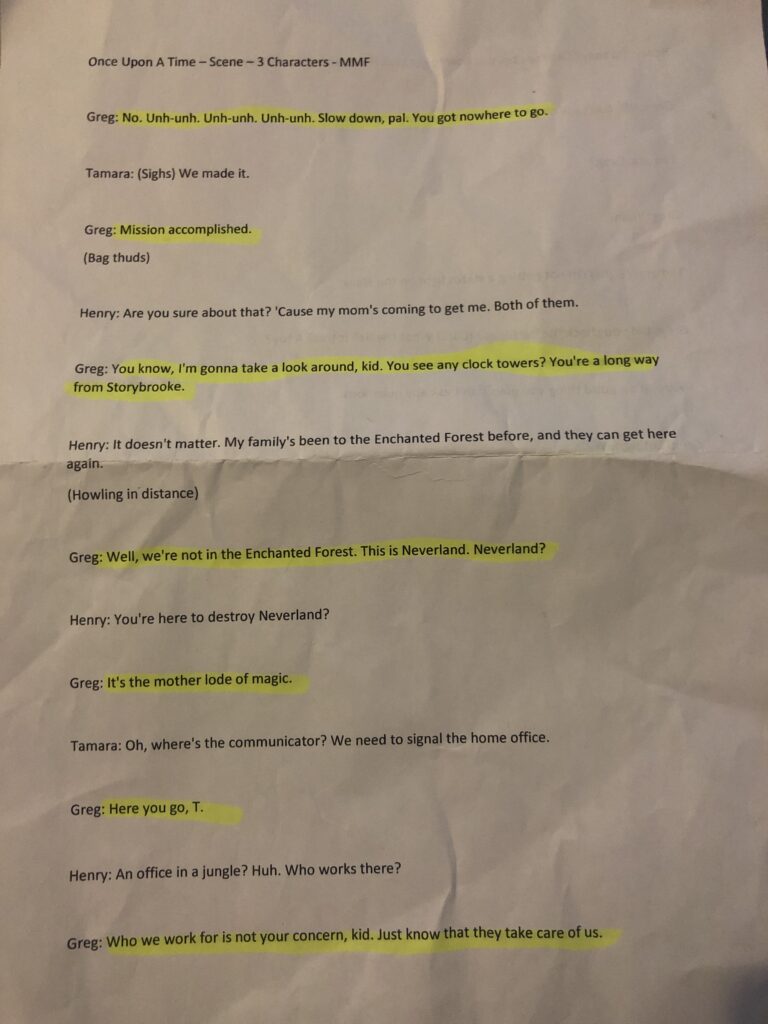For our scene Rose has chosen to be the character Tamara and Sophie chose to be Henry and I have chosen to be Greg. We have put some movement in like at the beginning where I trip Sophie up and that’s because she’s running away at the start of the scene but we want to stop her.
To plan for the audition I have researched my character and the program. However if it’s something that’s not out on tv or in theatre yet and your auditioning for it you can have a look in the script to find hints about who the character is, their age, job, temperament and their gender. You can also figure out by the script how you and the other characters get along. Are they more familiar or is the interaction more formal. You can also think about alternative ways the scene could be played as some directors will ask for the scene to be played in different ways.
To attract a diverse range of talent to audition for your production you could make it clear in the casting notice that you want to see actors of all backgrounds. You need to explore alternative platforms such as social media, online communities or local organisations where you can discover new actors who may not have the opportunities that other actors have. You should also be open minded about your casting choices although someone may not bring your initial vision to the audition they could bring something unique and valuable to your production.
To make sure an audition is fair and inclusive for everyone is by looking at talent, giving everyone the same information, evaluate wether casting decisions are being led by bias or story value. It’s important to figure out things that are required and things that are just biases so when you get into the casting room you’re not shutting people out for the role just because they don’t fit the traditional mold. Consider disability’s, having a designated person to be able to help people in different ways for example a person with disabilities may need to know something ahead of time to get a hold of it for example the choreography. Make sure all performers feel safe in the audition room like they’re not being judged for their talents.
To communicate effectively in coordinating auditions and production schedules you need to prepare your materials and expectations because you will need a clear idea of what kind of actors you are looking for and what skills and qualities they need. You should also introduce yourself and the project. You should be attentive, supportive, constructive and patient with the people auditioning. Make sure you’re giving clear and specific feedback by telling the actors what you liked and disliked, what you want them to improve or change, what you’re looking for in the role. Being open and flexible is a good form of communication by being willing to listen to the actors, answering any of the questions the actors ask, you should also be open to discovering new talents, perspectives and possibilities. Making sure you’re following up and confirming this means contacting the actors, talking to the directors and producers before telling someone they have a part, Thank people for their time and effort be all around polite.
Set ideas and examples.
we are just going to use a black box as it’s an audition we don’t need much besides a plain black ground and a camera.
Props list.
We need a bag and a walkie-talkie for the “communicator.”
Costume ideas.
Because it’s an audition we need to wear our blacks which is our movable clothing like leggings or joggers and movable shirts and appropriate footwear like jazz shoes or trainers.
Casting call.


Sound.
we will use sound for our dance audition which is a song from Julie and the phantoms and our solo singing auditions which mine is ‘Home’ from BeetleJuice.
Script.

